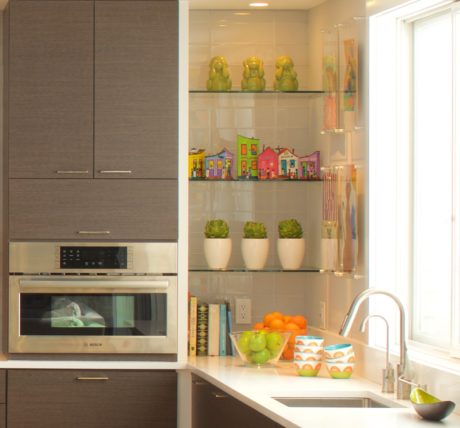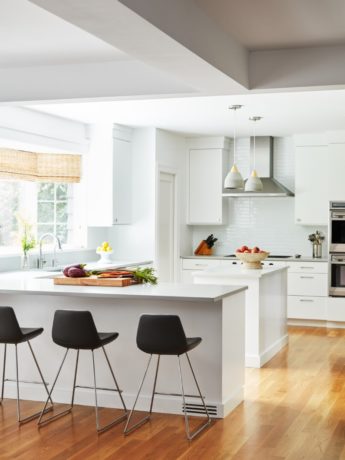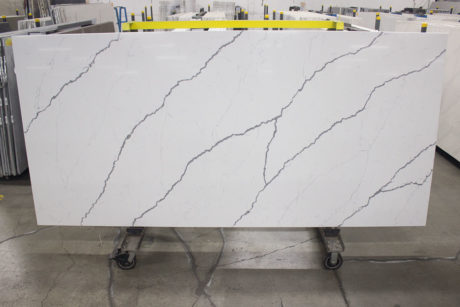The Rise of Quartz Countertops:

We continue to see a swift and steady rise in the request for “engineered” materials like quartz countertops. Although engineered stone products have been around for years, (i.e. think white Corian vanity tops in the ’80s and ’90s), their aesthetic appeal was limited. The latest inflow of clients, most with young children, but also the empty-nesters, have a sharper eye on the long-term functionality of their hardworking spaces. As quartz is making headlines on Houzz, Pinterest, and other blog sites, these are the materials that most new clients request.
Variety:
Our samples of Caesarstone, Silestone, Aurea, and Pental Quartz take up as much room on our display shelves as the natural stone materials. Since our business hinges on designing fabulous (and functional) kitchens and baths, our clients look for honest advice as part of their cabinet investment. At this year’s KBIS (Kitchen & Bath Industry Show) in Las Vegas, we visited the numerous quartz manufacturers that dominated the trade show floor. Our Team focused on gathering the insight that would help our clients make an educated decision about what material is “best” for their quartz countertops.
Thickness:
Quartz is supplied in standard 2 cm and 3 cm thicknesses. The 2 cm works nicely for contemporary vanity countertops, with the 3 cm being “standard” for kitchens. However, as our clients request thicker countertops at 3″- 6″ for greater visual impact, quartz is an easy option. Fabricators can build up the edges to make custom thicknesses. The large slab sizes and consistency of strength in quartz yield a good result.
Color/Style:
The base color runs fully through the material, not just applied to the top surface. We point out that this is important to consider for scratching as well as when creating decorative edges that carve into the inner material. The visible patterns that are intended to mimic marble and other natural stones are designed into the material. These are artistic interpretations and not the real veins that occur in nature. If you feel that these patterns look “faux”, it is because they are fake.
Uses:
Although the term “heat-resistant” is often used with quartz, it can only tolerate very low temperatures. Since quartz countertops are held together with resins (i.e. glues), it will melt under heat. This is NOT a problem that requires easy repair. If your family can’t imagine using a trivet, quartz is not the right receptacle for your hot dish from the oven.
What’s Best:
At JWH Design & Cabinetry, our goal is to inform clients about the wide variety of materials on the market. We provide the real facts about options so and help clients to evaluate the pros and cons. This is the way they can best determine the “best” material for their home.
We will be reviewing porcelain slabs as another great option for countertops, floors, walls, etc. Please let us know if you’d like to receive emails when we post these articles. Hope this helps! Jennifer W. Howard


